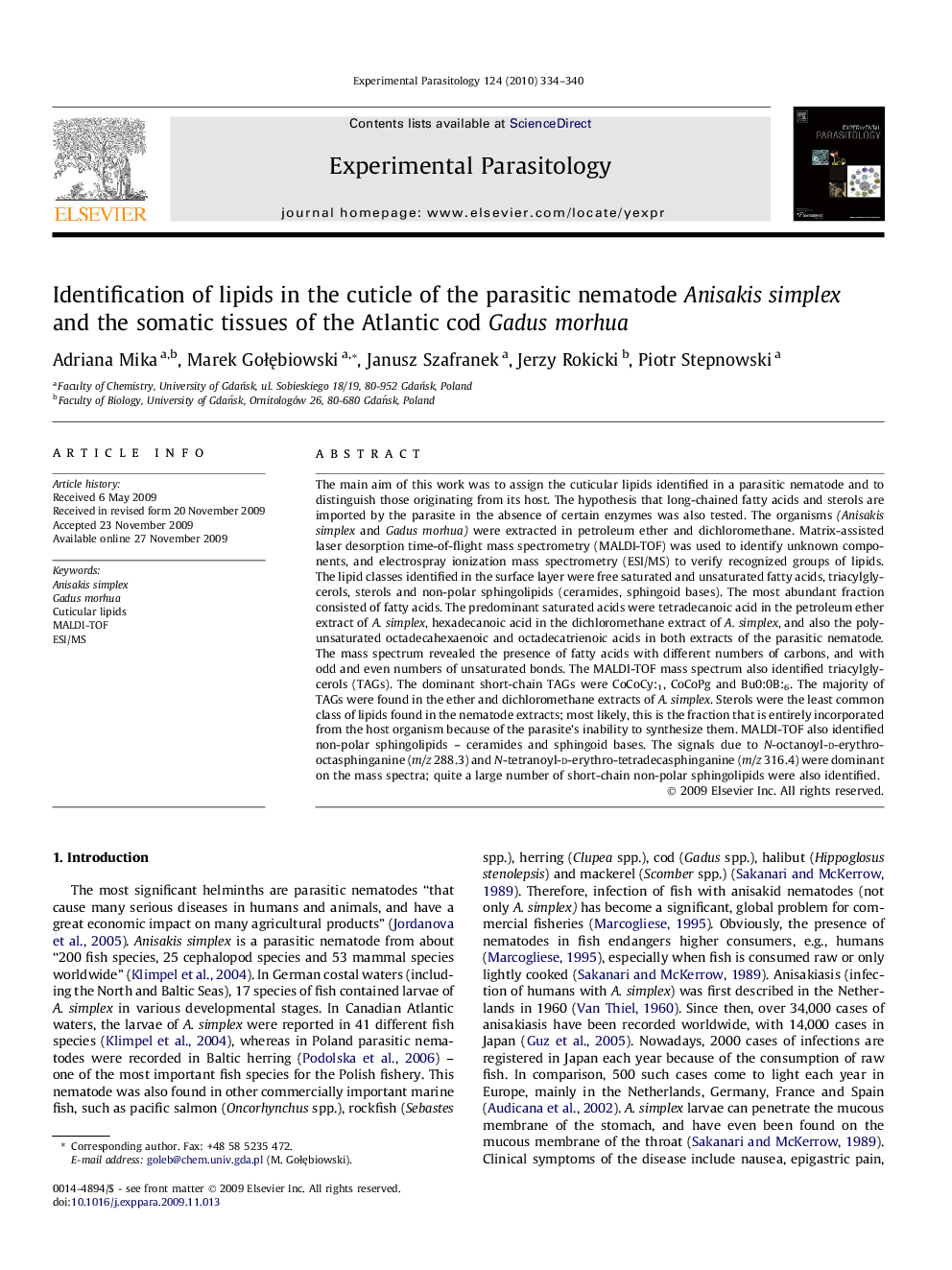| کد مقاله | کد نشریه | سال انتشار | مقاله انگلیسی | نسخه تمام متن |
|---|---|---|---|---|
| 4371644 | 1302533 | 2010 | 7 صفحه PDF | دانلود رایگان |

The main aim of this work was to assign the cuticular lipids identified in a parasitic nematode and to distinguish those originating from its host. The hypothesis that long-chained fatty acids and sterols are imported by the parasite in the absence of certain enzymes was also tested. The organisms (Anisakis simplex and Gadus morhua) were extracted in petroleum ether and dichloromethane. Matrix-assisted laser desorption time-of-flight mass spectrometry (MALDI-TOF) was used to identify unknown components, and electrospray ionization mass spectrometry (ESI/MS) to verify recognized groups of lipids. The lipid classes identified in the surface layer were free saturated and unsaturated fatty acids, triacylglycerols, sterols and non-polar sphingolipids (ceramides, sphingoid bases). The most abundant fraction consisted of fatty acids. The predominant saturated acids were tetradecanoic acid in the petroleum ether extract of A. simplex, hexadecanoic acid in the dichloromethane extract of A. simplex, and also the polyunsaturated octadecahexaenoic and octadecatrienoic acids in both extracts of the parasitic nematode. The mass spectrum revealed the presence of fatty acids with different numbers of carbons, and with odd and even numbers of unsaturated bonds. The MALDI-TOF mass spectrum also identified triacylglycerols (TAGs). The dominant short-chain TAGs were CoCoCy:1, CoCoPg and Bu0:0B:6. The majority of TAGs were found in the ether and dichloromethane extracts of A. simplex. Sterols were the least common class of lipids found in the nematode extracts; most likely, this is the fraction that is entirely incorporated from the host organism because of the parasite’s inability to synthesize them. MALDI-TOF also identified non-polar sphingolipids – ceramides and sphingoid bases. The signals due to N-octanoyl-d-erythro-octasphinganine (m/z 288.3) and N-tetranoyl-d-erythro-tetradecasphinganine (m/z 316.4) were dominant on the mass spectra; quite a large number of short-chain non-polar sphingolipids were also identified.
Journal: Experimental Parasitology - Volume 124, Issue 3, March 2010, Pages 334–340